The predator nun walked into Trish Cahill’s life straight out of the blue, on a busy summer day in the late 1960s.
Cahill was a teenager back then, wire thin with long, chestnut brown hair framing her face. She was babysitting her cousins in Glen Rock, New Jersey, and there were eight of them to look after ― a big Catholic family, much like her own.
One cousin was playing outside that day and Cahill had another little one in a high chair in the kitchen. It was quite a common child care tactic at the time, she said ― stick a kid in a playpen in the yard and watch through the window while doing chores and taking care of the others inside.
Cahill was washing dishes at the sink when she looked up and spotted a nun, in a full religious habit, hovering over the baby’s playpen.
At that point in her life, the teenager was still trying to make sense of a painful secret ― the sexual abuse she says she experienced just years earlier from her uncle, a Catholic priest. So when she saw the nun leaning over the baby, Cahill said, she sprinted outside to protect the child.
“It was like, ‘You’re not going to touch her, you’re not going to put your hands on her,’” Cahill remembers thinking.
But the nun she met took her by surprise.
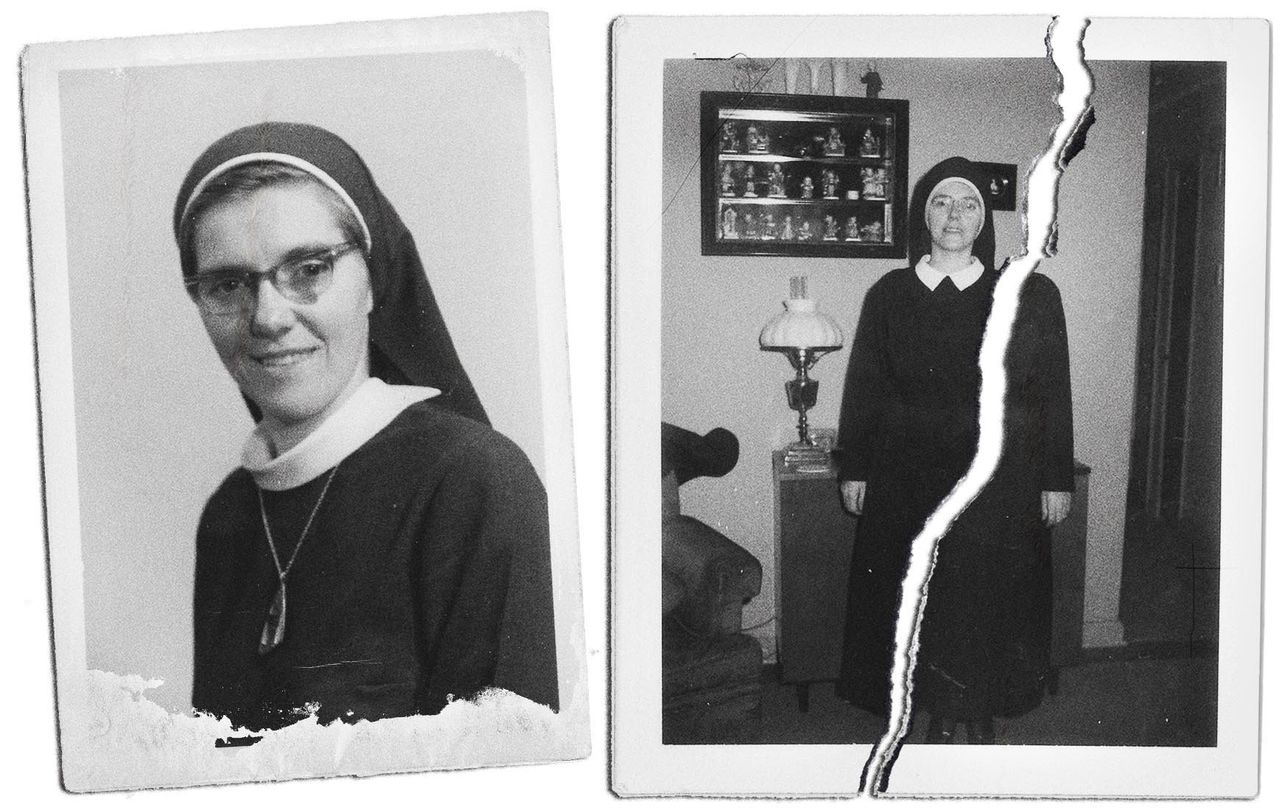
The woman introduced herself as Sister Eileen Shaw, telling Cahill that she was out on a walk from her nearby convent.
“She’s nice to me, which was confusing,” Cahill recalled.
The two struck up a conversation, Cahill said, which led to an invitation for the teen to play guitar at an upcoming Mass. That invitation led to more special treatment, private phone calls and private trips.
In fact, this strange encounter on the lawn was just the beginning of a long period of grooming and emotional manipulation, Cahill said. She didn’t realize until much later that the 12 years of history she had with Shaw was not a relationship ― but sexual abuse.
“She stole from my body, my mind and my soul,” Cahill, now 66, told HuffPost. “The woman was a thief who did not keep her vows.”
For over a year, the Roman Catholic Church has faced a reckoning over the crime of clerical sexual abuse. Catholics are once again demanding answers about bishops’ mishandling of abuse allegations, after high-profile scandals in the U.S., Australia and Chile toppled prominent figures. In response to this renewed call for transparency, Pope Francis acknowledged for the first time ever this February that nuns have been victims of sexual abuse by priests and bishops. Nuns from across the world have come forward to share their stories and demand change.
But stories like Cahill’s, about nuns being the perpetrators of sexual violence, have largely been lost in this new wave of accountability. Although abuse allegations against “women religious,” meaning nuns and Catholic sisters, are rarer than allegations against priests or monks, Cahill and other survivors of nun abuse are convinced that there are more stories out there. But because of gender stereotypes about female perpetrators of abuse, it is much harder to see the broader picture.
As survivors push more states to extend their statutes of limitations for child sex abuse cases, experts believe more of these stories will start coming to light.
“Why are they not coming out?” Cahill mused about fellow survivors of abuse by nuns. “They don’t have any other survivors to see what’s happened. They’re the only one.”
“The boys thought they were the only ones for a hundred years,” Cahill added. But now, she said, “the girls think they’re the only ones.”
A Childhood Lost
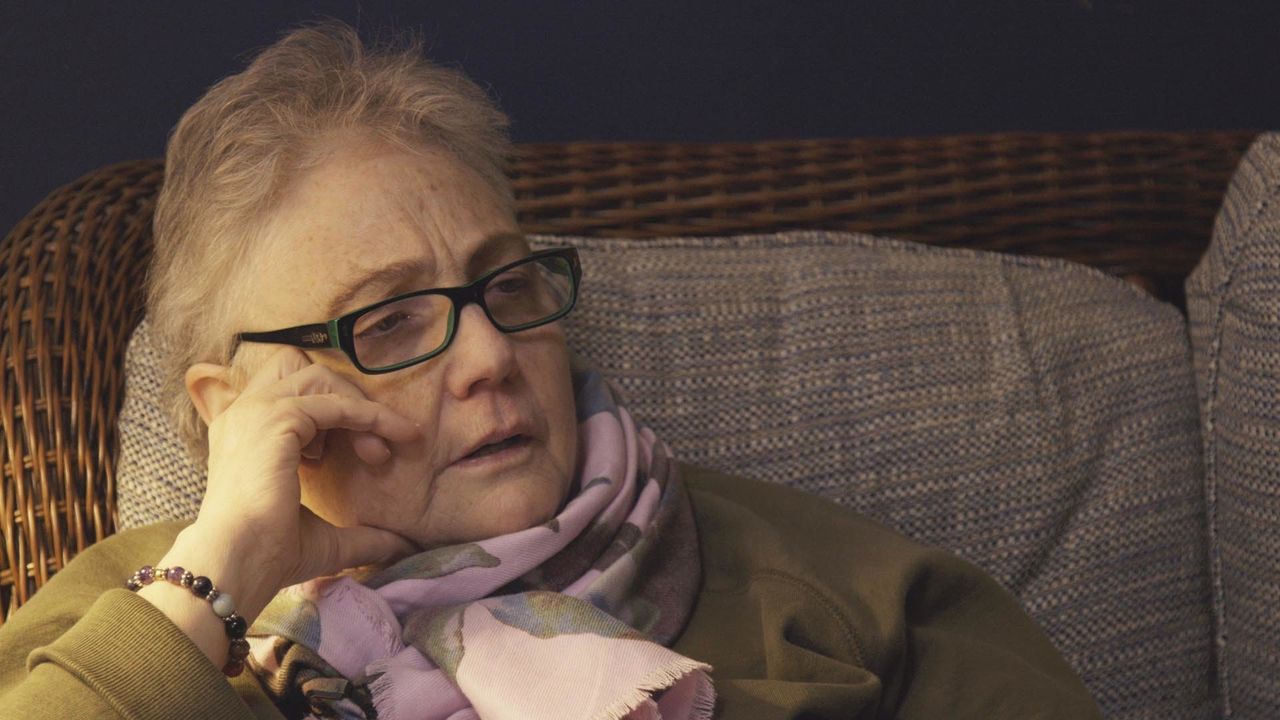
Church was an integral part of Cahill’s life growing up. Her family made sure to respect holy days of obligation ― the days in the liturgical calendar that Catholics are expected to attend Mass. Her parents sent her and her siblings to Catholic schools. Cahill said she was taught from a very young age to believe that heaven and hell were real places where people would be sent based on their earthly deeds.
So when her uncle ― the priest ― allegedly threatened that she would “burn and blister in the fires of hell” if she told anyone about the sexual abuse he was inflicting on her, Cahill said she believed him.
Cahill said the alleged abuse from the Rev. Daniel F.M. Millard, who died in 1973, happened between the ages of 5 and 13. (The Diocese of Camden told HuffPost that Millard’s name was not on a recently released list of credibly accused priests because Cahill’s allegation against Millard ― “the only accusation ever received about him,” it said ― “was deemed not credible.” The diocese also pointed to a 2005 article in which a family member questioned Cahill’s reliability. The diocese said it has not been provided with additional information since 2002.)
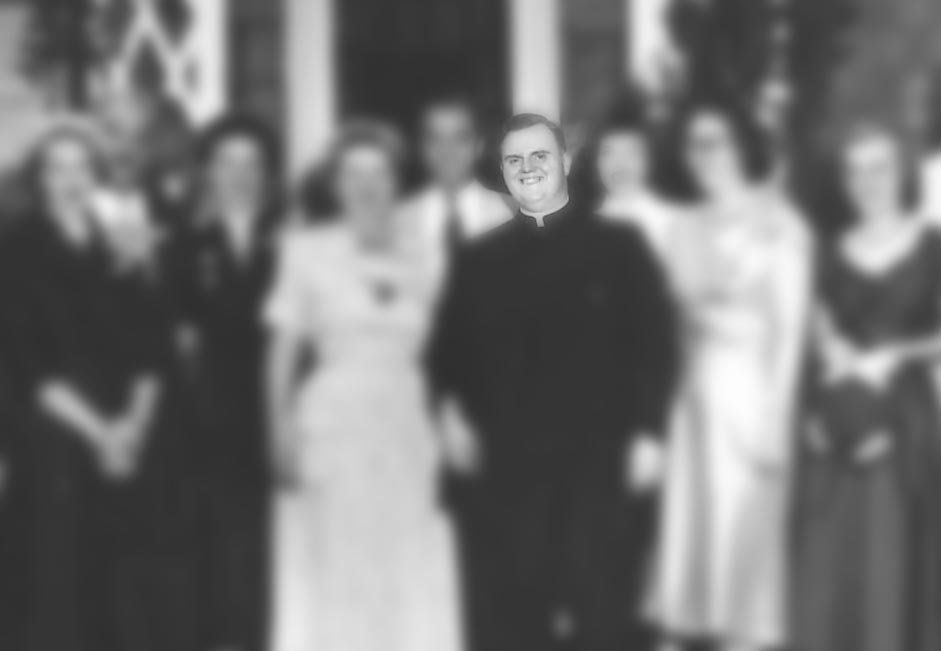
Because of the abuse Cahill claims happened to her as a little girl, when she met Shaw, she was already feeling vulnerable and lost.
At the time, Shaw was a teacher at St. Catherine School in Glen Rock. Cahill was a student at Paramus Catholic Girls’ High School, which was staffed by Shaw’s religious order, the Sisters of Charity of St. Elizabeth.
Back then, Cahill said, she was just flattered that an adult who seemed so kind and caring was paying attention to her.
“For her to be nice to me was just fantastic. She cared like she wanted to be with me. She was 36. I was 15. Who gets to hang out with a 36-year-old?” Cahill said. “Everything was in my favor.”
Looking back, the unusual nature of the pairing seems so obvious, Cahill said. She said she now wishes she had somebody “just watching out for me.”
Cahill remembers Shaw calling her at home for private, scheduled chats. The nun gave the teen gifts. Cahill said she soon felt safe enough to confide in Shaw about her uncle’s abuse.
About three months after they first met, Shaw allegedly invited Cahill to her bedroom at St. Catherine Convent ― which is where the abuse first turned physical.
In the years afterward, Shaw used to pull the teenager out of high school in the middle of the day, Cahill said. They would go to a nearby motel, where the pair would stay for hours.
“Then she’d bring me back to school, so I was there for dismissal,” Cahill said. “Nobody questions a nun.”
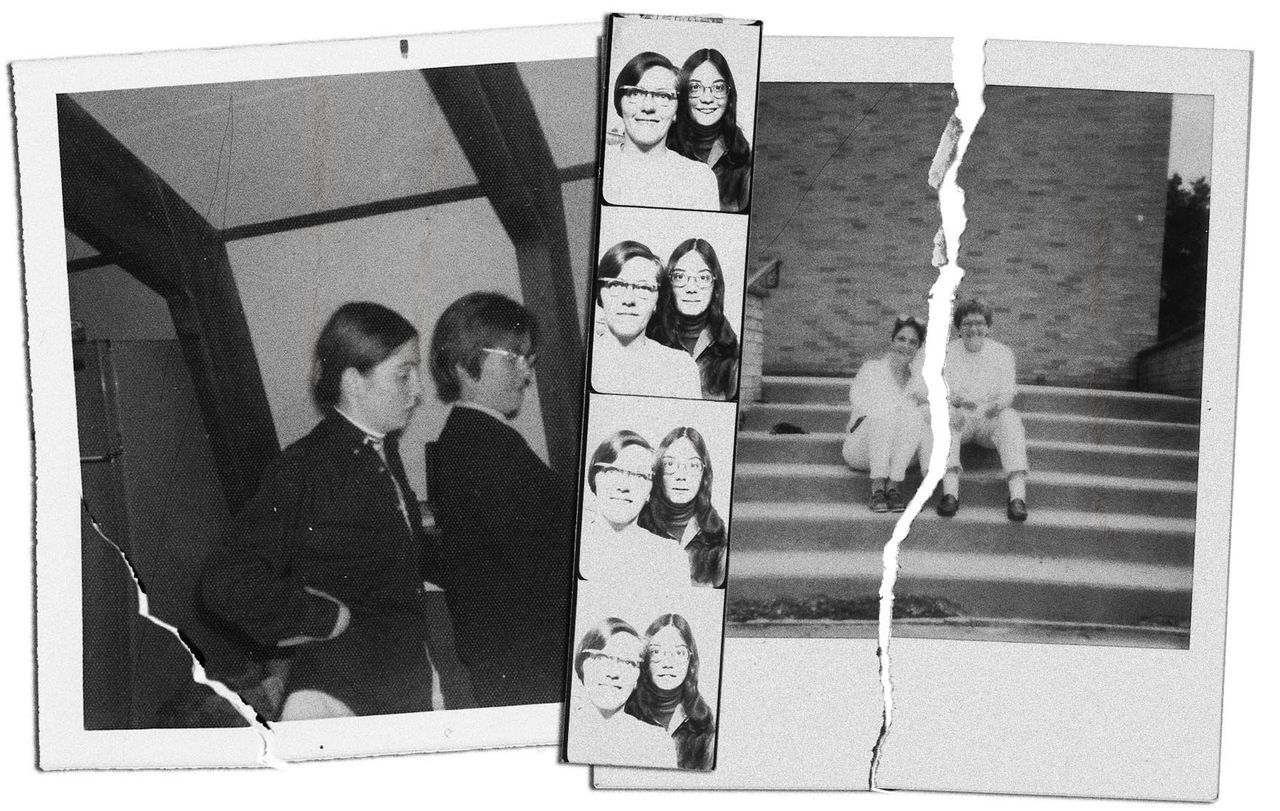
They started taking trips together ― to Shaw’s parents’ house and vacation home, to religious retreat houses, to Atlantic City, to the Meadowlands Racetrack. They traveled all over the East Coast, Cahill said, from Florida to Quebec. They went on camping trips and slept in the same sleeping bag, she said. Shaw allegedly taught Cahill how to gamble on horse races and introduced her to alcohol and drugs. The nun told her how to dress and fashion her hair, and discouraged her from dating boys, Cahill said. They once went to a gay bar in New York City’s Village neighborhood, she said.
“She told me she loved me,” Cahill said. “I believed it.”
Shaw had a medal inscribed with the religious name she took when entering her religious order ― Sister Marian Anthony. That medal took on another meaning during their time together, Cahill said.
“She would take it off of herself at night and put it on me, and then we would have sex. Not a relationship, sex,” Cahill said. “And then, in the morning, it would go back on her. It was the seal of confessional.”
“It worked.”
Cahill told HuffPost that members of the Sisters of Charity knew or at least suspected that she was spending an inordinate amount of time alone with Shaw.
“At one point, I slept in the same bedroom with a nun in the next bed while we were in bed,” Cahill said.
But the Sisters of Charity maintains that its leadership was unaware of Shaw’s abusive behavior until 1994, when Cahill, then 41 years old, approached the religious order with an attorney.
“The Sisters of Charity have worked to act in a responsible, compassionate and just manner for all concerned,” the religious order told HuffPost in a statement.
Shaw, now 85 years old, is still a member of the Sisters of Charity. Her religious order has placed her in a “restricted, confined lifestyle.”
“She accepts responsibility for her actions and the harm that they have caused,” the Sisters of Charity told HuffPost. “She continues to pray daily about this.”
Seeking A Legal Remedy
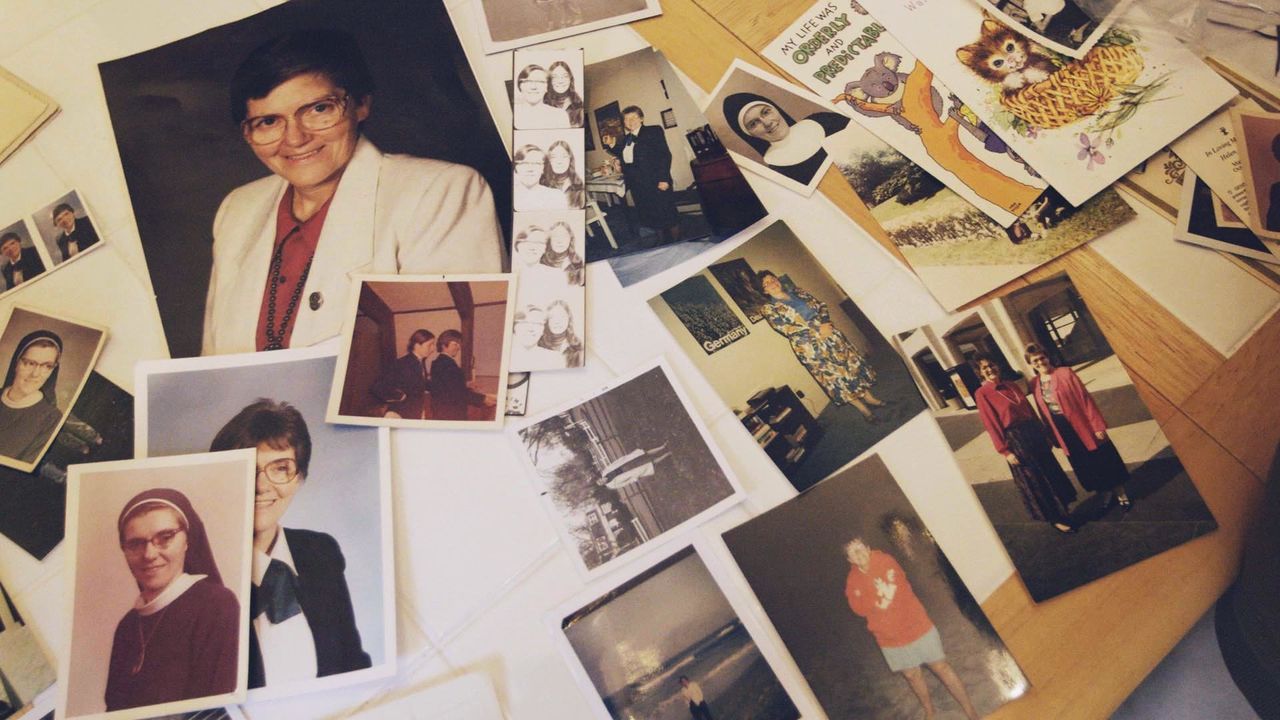
When she was 27 years old, Cahill started attending a 12-step recovery group to confront her alcoholism and other drug addictions ― coping methods often sought out by childhood abuse victims. It was there that she started opening up to fellow group members about her experiences with the nun.
“They were the first ones that said this is not a relationship, and I thought they were crazy,” Cahill said.
She moved to Europe to try to get away from Shaw. Eventually, with her life spiraling out of control, Cahill decided to go back to Shaw’s religious order in 1994 to seek justice. But at the time, she was far outside the statute of limitations in New Jersey, so she had no basis to file a lawsuit.
In 1994, the Sisters of Charity agreed to an out-of-court settlement with Cahill, according to documents provided by Cahill’s current lawyer James Marsh. The settlement had a confidentiality clause that prevented Cahill from talking to the media about her claims. In the agreement, the Sisters of Charity denied that the order was negligent or otherwise legally responsible for Cahill’s abuse. (The order declined to tell HuffPost where it stands on that statement today).
Marsh told HuffPost that back in 1994, there were fewer options available to victims seeking justice ― so for the Sisters of Charity to offer any financial compensation may have seemed an act of charity at the time.
“Trish got caught in this trap where zero times zero is zero and some money is better than no money,” Marsh said. “That was a reasonable position to take in 1994.”
Cahill claimed a significant amount of the money from her settlement went toward lawyers’ fees and therapy. But more than the money, she said she wanted an apology from the sisters for failing to speak out and stop the abuse.
The Sisters of Charity told HuffPost that the order was “deeply saddened” that Cahill did not view the settlement as a “heartfelt response to her situation.”
The religious order claims that immediately after receiving Cahill’s allegation in 1994, it removed Shaw from ministry and had a “response team” composed of lay and religious professionals conduct an investigation, which substantiated Shaw’s “improper conduct.” Since the settlement, the Sisters of Charity said that Shaw has been ordered to undergo therapy and restricted from working with individuals under 21 years of age. She continues to live with fellow sisters and is currently engaged in “relapse prevention” with a licensed social worker.
In the years that followed, while abuse committed by priests began to capture more headlines, abuse committed by nuns largely remained under the radar.
Survivors Of Abusive Women Face Skepticism
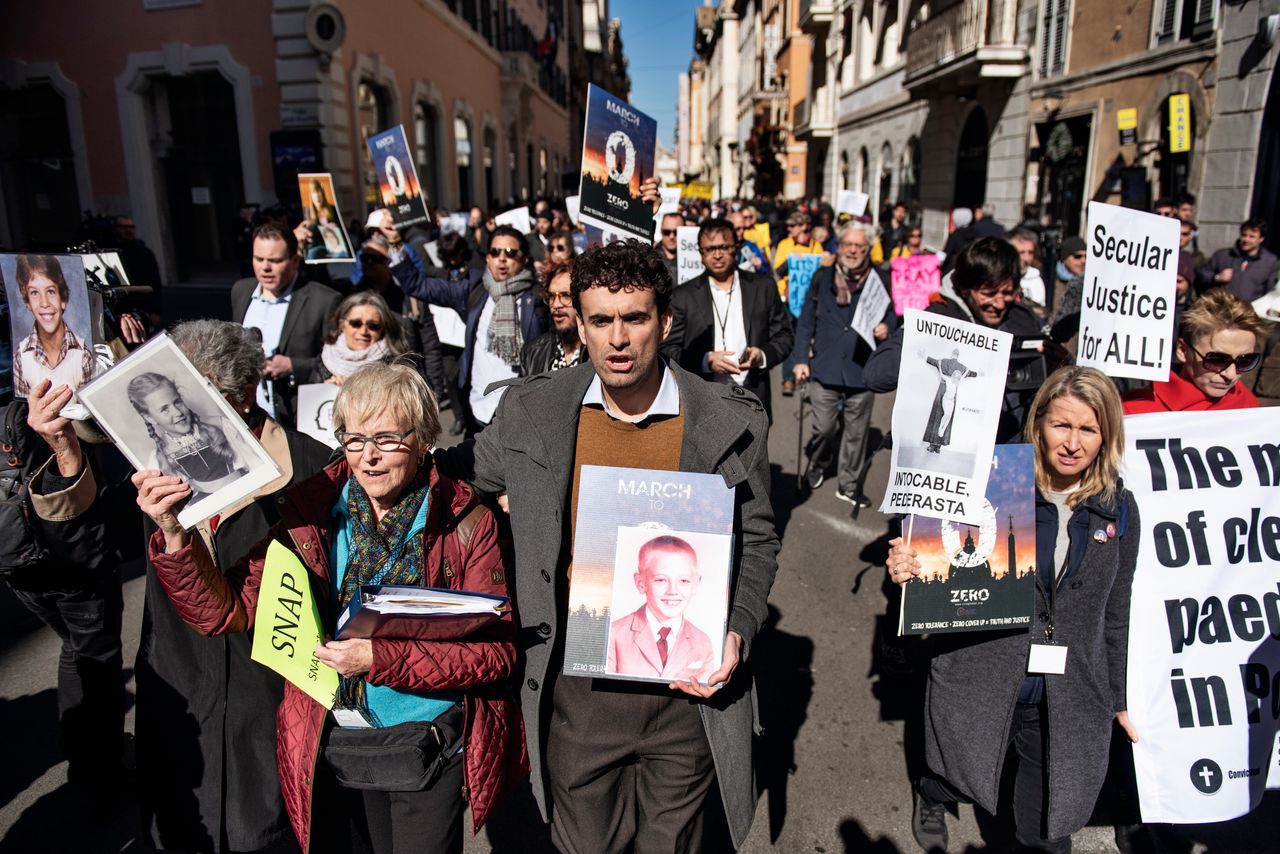
For decades, there have been more Catholic nuns and sisters in the U.S. than Catholic priests. Still, sex abuse allegations against these women appear to be far less common than allegations against priests or religious brothers.
Bishop Accountability is a website that collects data on the abuse crisis. Of the many U.S. settlements it has tracked online, only a handful involve abuse allegedly committed by religious women.
One of the best approximations of the occurrence of nun abuse in the Catholic Church comes from a nationwide study of child sexual abuse published by the Australian government in 2017. The Royal Commission Into Institutional Responses to Child Sexual Abuse gathered data from Catholic Church authorities in the country regarding claims of child sexual abuse received between Jan. 1, 1980 and Dec. 31, 2015. The data showed that of all known alleged perpetrators, 5% were religious sisters.
This dovetails with statistics collected by U.S. police departments that suggest female sex offenders are relatively rare. According to data collected by the FBI between 2007 and 2017, women represent only about 2% of adult arrests for rape and about 8% of adult arrests for other sex offenses.
But since the majority of sexual assaults are not reported to police, these statistics don’t show the whole picture. Researchers have also found that survivors who experience childhood sexual abuse at the hands of both women and men are more reluctant to disclose the abuse they suffered from the female perpetrator.
Lara Stemple, director of the health and human rights law project at the UCLA School of Law, has studied female perpetrators of sexual violence. Stemple said it’s highly likely that sex crimes committed by female offenders are underreported.
Stemple said a better picture of the prevalence of female sex offenders comes from the Centers for Disease Control and Prevention’s National Intimate Partner and Sexual Violence Survey, which is collected through phone interviews with victims across the country. Stemple and her colleagues analyzed the 2011 data and found that men and women were equally likely to report experiencing nonconsensual sex in the previous 12 months, and that most male victims reported female perpetrators.
The CDC data suggests to Stemple that female perpetrators of sex abuse are more prevalent than is often assumed.
However, Stemple said, because of gender stereotypes about women being passive and nurturing, people may find it hard to believe that women are capable of sexual violence. Mental health, social work, public health and criminal justice professionals also tend to think of female sex offenders as less serious offenders than males. They may try to explain away female-perpetrated sexual violence as a “misguided expression of love,” she said ― something she noted would rarely be said about the actions of male perpetrators.
Stemple said these stereotypes make it harder for survivors of this type of abuse to come forward.
“[Women are] not seen as the stereotypical abuser,” Stemple said. “So a lot of times, victims have trouble identifying what happened to them as being abuse.”
No matter the gender of the perpetrator, Stemple said, it’s important to remember that at its core, sexual abuse is about an imbalance of power. And nuns have considerable power in the eyes of a Catholic school student ― both as teachers in charge of the classroom and as people who are set apart and consecrated within the church.
As a feminist, Stemple said, she doesn’t think it does the feminist movement any good to assume that women are incapable of committing abuse.
“Women are complex, they’re multidimensional. They have good traits and bad traits,” Stemple said. “And sometimes, when they have power, that they abuse it is no surprise to me.”
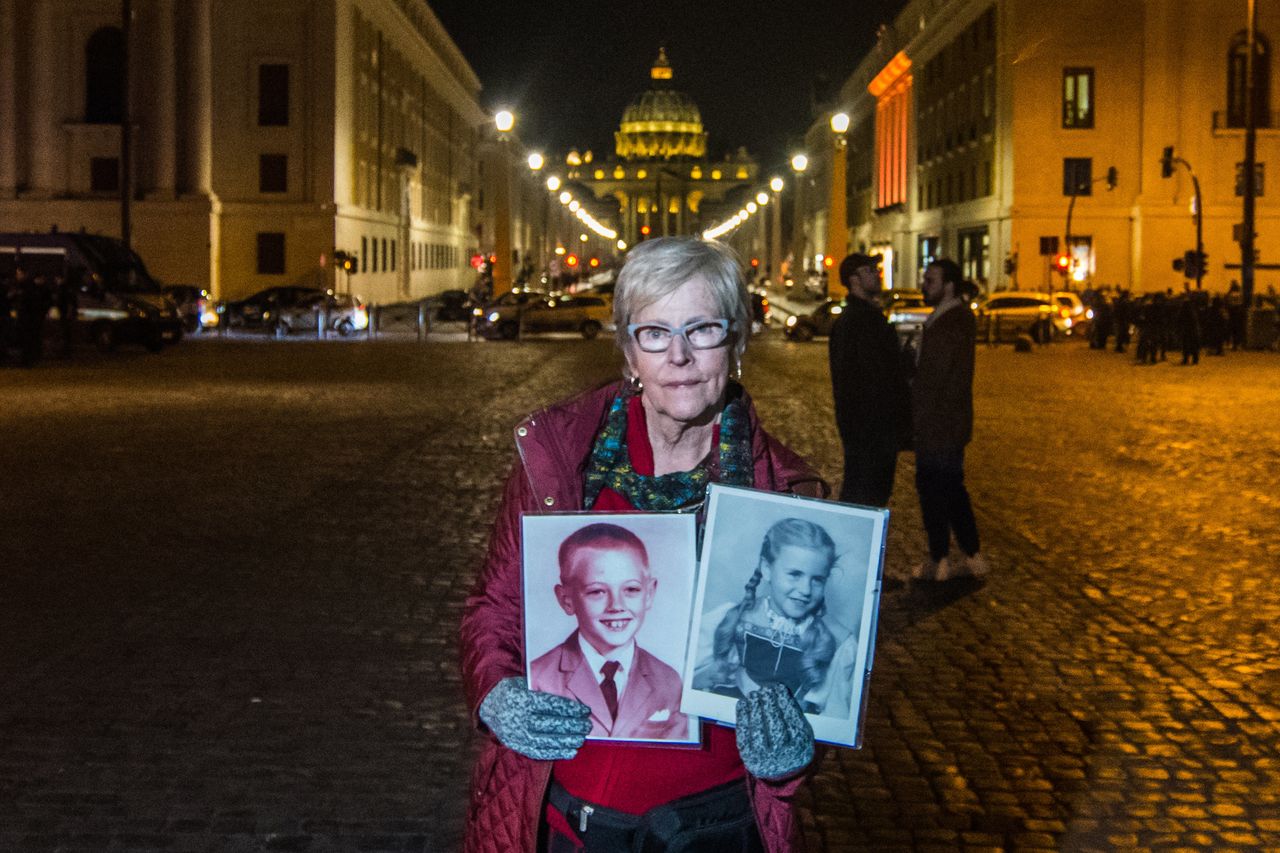
Mary Dispenza, a Seattle activist with the Survivors Network of Those Abused by Priests (SNAP), is the advocacy group’s point person on nun abuse. A former nun herself, Dispenza said that religious women have largely been the “face of service, kindness and dedication” for the Catholic Church, often serving as teachers and social workers.
“When I think of them as perpetrators, even for me, it kind of gives me the shivers a bit. It’s so far from what you expect from them as women, as nurturers,” Dispenza said. “But the truth is men and women are both perpetrators, and to shy away from that is a sin.”
Marci Hamilton, CEO of the advocacy organization Child USA, told HuffPost there has been so much publicity about boys being sexually abused by priests that it detracts from the fact that there have also been a number of girls sexually abused by priests and girls sexually abused by nuns.
“Abuse by a female nun of a girl, it’s so far outside the expected parameters of what we read about,” Hamilton said. “It’s hard enough for victims to come to terms with what really happened to them, but to try to come to terms with something that doesn’t seem to be happening to anyone else is doubly hard.”
Dispenza said that several nun abuse survivors reached out to her after last year’s landmark Pennsylvania grand jury investigation into sex abuse in the Catholic Church. She said she now has a list of about 56 people who claim they were sexually abused by nuns or sisters.
Hearing from survivors prompted Dispenza to come to her own realization earlier this year. She said she remembered that while she was a postulant for her religious order in the late 1950s, one of her superiors called her into a private meeting and kissed her.
“I’ve held it as a story of confusion and just never named it for what it was,” Dispenza said. “It was just recently that I named it and realized that was a misuse of power and sexual abuse.”
Dispenza said she thinks more survivors of nun abuse will come forward once they realize they are not alone.
“These stories are very, very, very important,” she said. “I think with one story being told, it gives courage to another survivor. That’s going to make the difference, I believe.”
Another Survivor Speaks Up
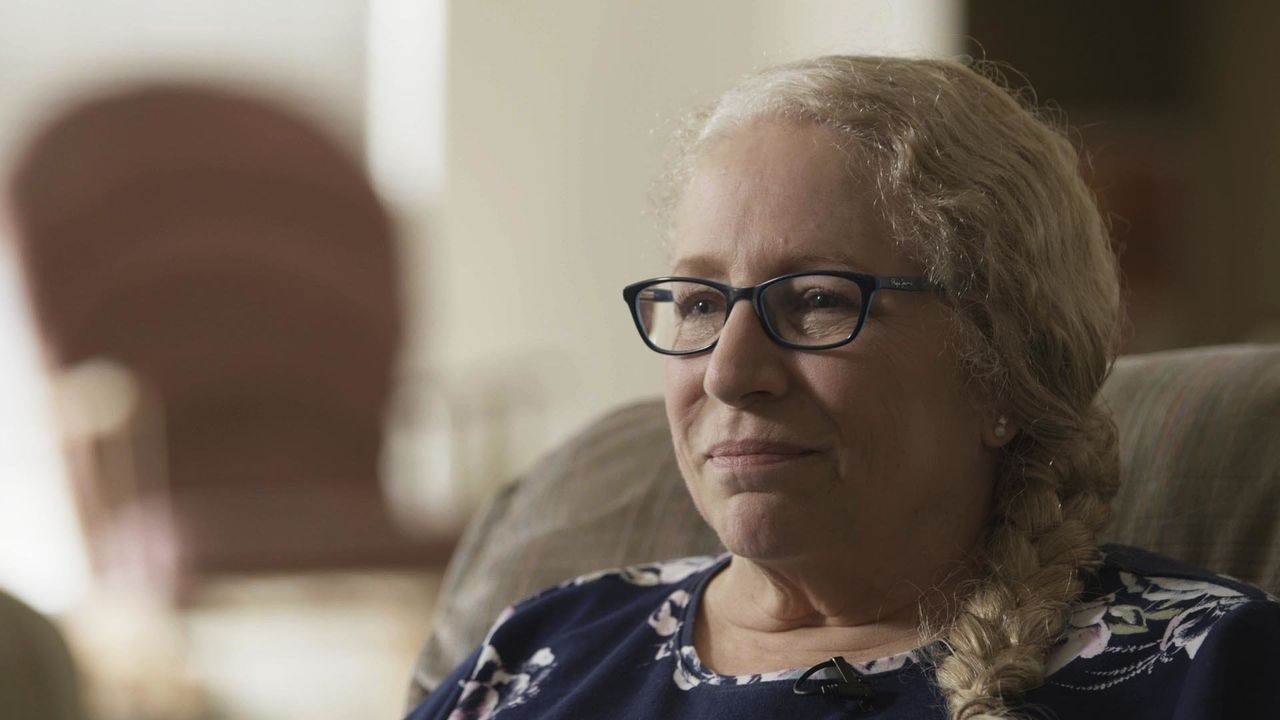
After spending years as an anonymous “Jane Doe,” Anne Gleeson has decided to open up about her story of nun abuse.
Gleeson, a 61-year-old from O’Fallon, Missouri, told HuffPost she was sexually abused by Sister Judith Fisher, a former member of the Sisters of St. Joseph of Carondelet. Although she revealed her identity in 2008, this is first time she has publicly described the abuse in detail.
Gleeson said it began in 1971, when she was 13 years old. At the time, the nun would have been around 37 years old ― about 24 years Gleeson’s senior.
Both the Sisters of St. Joseph of Carondelet and the Archdiocese of St. Louis, where the sisters are based, declined to comment on Fisher’s case out of “respect for the privacy of any person who reports abuse.” The religious order stood by this statement even after being informed that Gleeson was giving it her “full and complete permission” to answer questions about the case.
Fisher was Gleeson’s eighth grade homeroom teacher at the Immacolata School in Richmond Heights. The nun started grooming her for abuse not long after the school year started, Gleeson said, leaving presents on the teenager’s desk and adding special personal notes on graded papers. The nun asked her to stay after school frequently, played with the teenager’s hair and pressed up close while the class watched movies, Gleeson said.

“It would kind of send these waves through me, and I didn’t quite understand it,” Gleeson remembered.
By December of that year, Gleeson said, Fisher had invited the teen to a sleepover in the basement of her convent. The next time Gleeson spent the night, it was in the nun’s bedroom. That’s when she said the nun asked to touch her.
“It just became sexual all the time after that,” Gleeson said.
Gleeson said the nun always described the abuse as “God’s love” and claimed it had to be kept a secret because, “Nobody else is gonna understand it. It’s too special for them to get.”
Fisher also became close to Gleeson’s mother, siblings and grandmother, Gleeson said, lulling family members into thinking it was safe for the teen to spend so much time alone with the nun.
Gleeson said she kept a record of everything that was happening between her and Fisher in a calendar that she used as a personal diary. Her parents discovered the diary under her mattress in 1974 ― and were devastated.
Like Cahill, Gleeson said she was raised in a staunchly Catholic family. Her father was an active and devout member of their local parish ― volunteering in the choir, as an usher, and as a lector. Her mother, through Fisher’s influence, had become very close to the Sisters of St. Joseph of Carondelet.
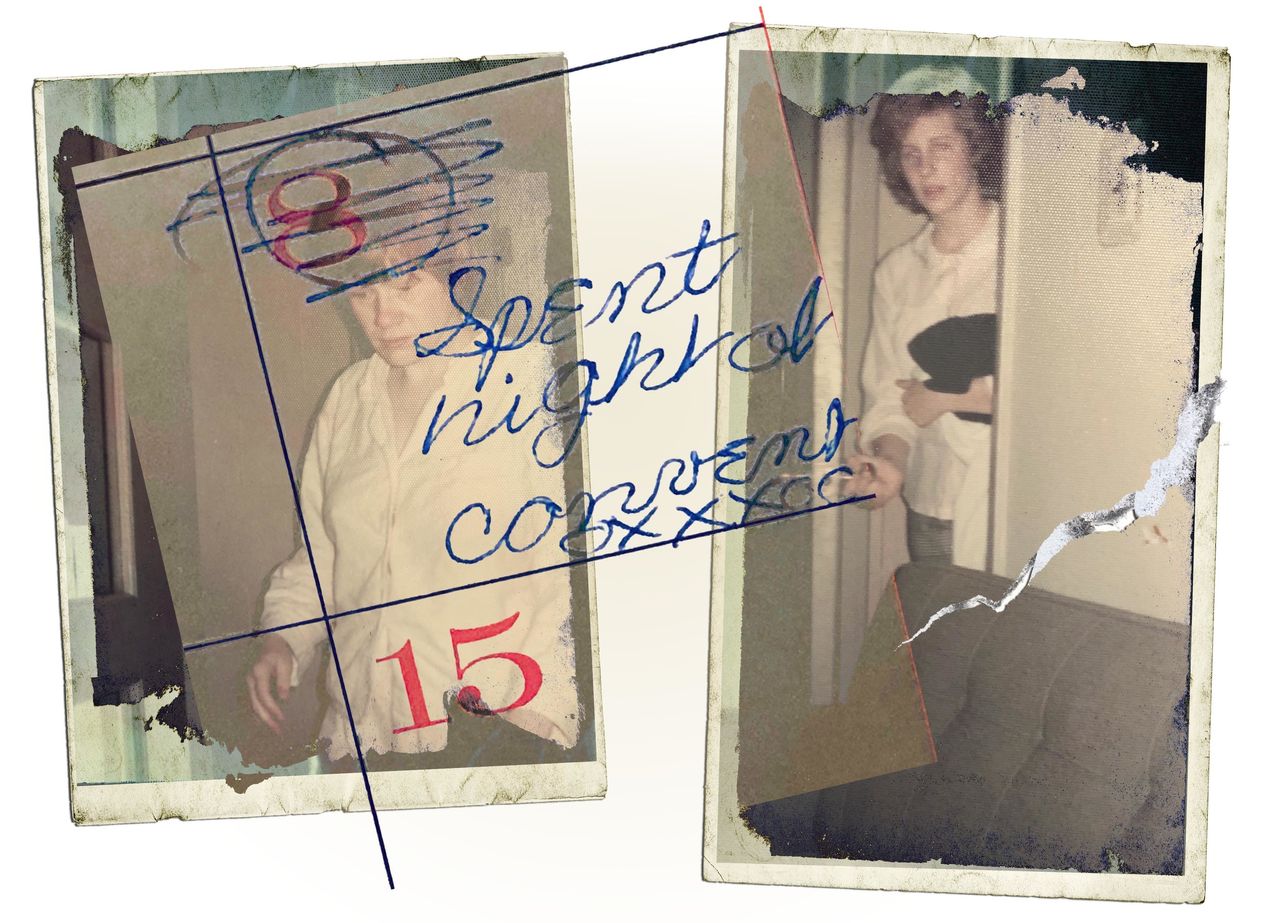
When her parents found out that Fisher was preying on their daughter, they did what many Catholics did at the time ― they went to the church for help.
Gleeson said that her parents confronted their local priest with proof of the abuse. She said the priest promised to take care of it, urged Gleeson’s father not to go to the police, and asked him “not to bring scandal to his parish.”
“So he kept quiet,” Gleeson said about her dad. “And he believed that they would fix it. And reprimand [the nun], and that there was no need to go to the police.”
But Gleeson claims nothing came of the priest’s promises. In fact, the abuse became more of a secret, she said, and Fisher was able to prey on her for years afterward.
Her parents tried pushing her to stop meeting with Fisher. But as a teenager, Gleeson said her instinct was to fight against that. So she began lying to her parents about where she was, just so that she could go see the nun. As the nun drew her closer, she began to be increasingly isolated from friends in high school.
Gleeson said Fisher made it seem like the abusive relationship was like a “romantic novel or a Romeo-Juliet thing.”
“An adult grooms you like that and preps you, it’s like the longest foreplay in the world,” Gleeson said. “And it’s got that forbidden aspect, and so it’s enticing, and it singles you out, and that person becomes everything to you.”
The sexual abuse allegedly continued until Gleeson was 19 years old, she said.
“It was all done gently. It was all done in the name of love,” Gleeson said.
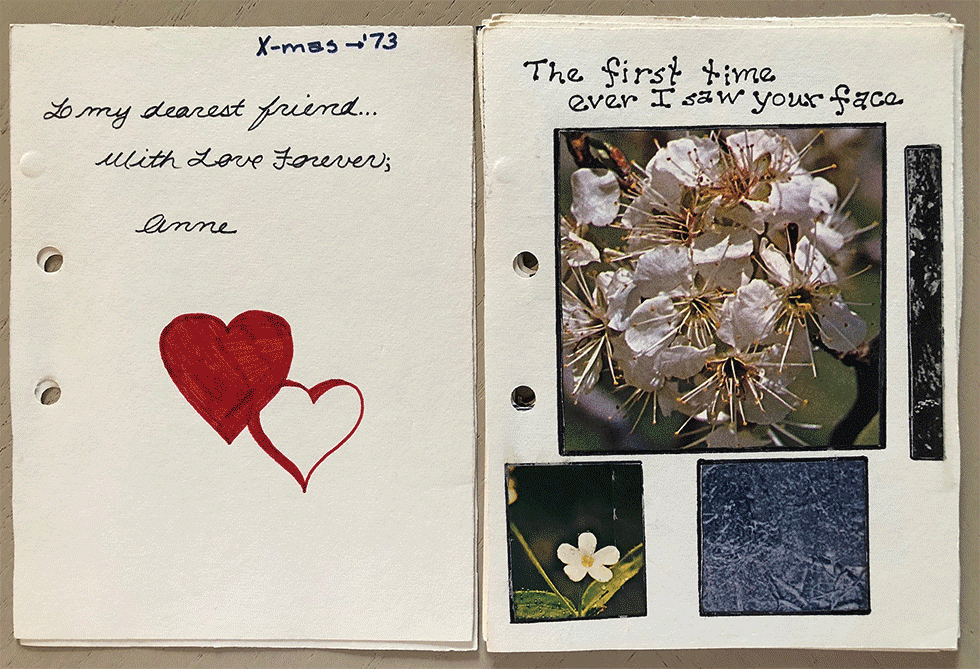
Fisher was eventually transferred to Colorado, where she became the principal of St. Francis de Sales School in Denver. Around 1977, Gleeson said Fisher told her she was going to be exclaustrated, meaning that she was getting permission to live outside her religious community while remaining bound by her vows. (Church officials declined to confirm Fisher’s exclaustration to HuffPost. The Sisters of St. Joseph of Carondelet told The Associated Press in 2008 that Fisher left the religious order in 1979.) The pair remained in touch for years, Gleeson said.
When she was about 40 years old, a therapist suggested to Gleeson that she had been sexually abused as a child. At first, Gleeson said, she defended Fisher and insisted that what she had with the nun was a love that no one else could understand. But eventually, she came to understand that Fisher had been a pedophile.
“It rocks your world,” Gleeson said of the realization. “And it takes you back to a new starting place, and it makes a fool out of what you thought was solid.”
In the late 1990s, Gleeson started attending SNAP meetings and hearing from fellow survivors of sexual abuse within the Catholic Church. In 2003, Gleeson decided to file a lawsuit against the Archdiocese of St. Louis, the Sisters of St. Joseph of Carondelet, and Judith Fisher.
She said the archdiocese immediately sought to distance itself from the abuse.
“Even though they employed her, even though that’s who my parents went to, even though they knew of it, they’re like, ‘You can’t get us,’” she said.
Since so many years had passed, Gleeson said, she hoped that Fisher would want to confess and answer questions about the abuse. But Fisher died in 2004, before she could be deposed. The death left Gleeson feeling “robbed.”
“I thought maybe she was ready to answer some questions so that I could forgive, put things aside. And it never happened,” Gleeson said. “It wasn’t the money I was after, it was just some closure. And I couldn’t do that without explanations, and it’s left me with questions.”
Gleeson eventually decided to settle with the Sisters of St. Joseph of Carondelet. (The archdiocese was not a party to the settlement, according to her former lawyer.) In 2005, the religious order’s leaders sent private letters to Gleeson apologizing for the harm caused by Fisher’s sexual abuse. Gleeson provided photos of these letters to HuffPost.
Looking back, Gleeson said she has regrets about remaining anonymous during the suit. She revealed her name to The Associated Press in 2008. Since then, she’s watched fellow survivors coming out of the woodwork thanks to the Me Too movement. The movement, Gleeson said, has given survivors hope that if they speak up, they might be believed.
Gleeson believes survivors of nun abuse are “everywhere,” but are afraid to come forward because of the bias against seeing nuns as sexual abusers.
“Nuns kind of get a free ride. It’s women. They’re sweet,” she said. “You think of women as being nurturing. And you trust them more. And when it’s done gently and sweetly and they paint it to be to your benefit, you believe it.”
“It’s a true form of brainwashing,” she said. “I have to believe that, because how else could I have been so blinded?”
A Scandal Uncovered

After The Boston Globe’s Spotlight team began reporting on the Catholic Church’s sexual abuse crisis in 2002, U.S. Catholic bishops came together to set up guidelines for how to prevent child abuse in the future. The document that came out of these discussions, the Dallas Charter, set up procedures for how the church should respond to sex abuse allegations, cooperate with civil authorities, discipline offenders, and be accountable to its lay members. The charter has been updated several times since it was first approved in June 2002.
While the charter was a step forward with respect to Catholic priests, it doesn’t apply to all Catholic officials. Only men can be ordained in the Catholic Church. While nuns and religious sisters are consecrated members of the church, they are technically part of the laity. The church generally has closer oversight of clergy than it does over its nuns and sisters.
The Leadership Conference of Women Religious, which represents about 80% of Catholic sisters in the U.S., told HuffPost that it encourages members to adopt sexual abuse prevention policies and believes most of its affiliated religious orders already have these in place. However, the group is a volunteer organization that can’t mandate that its members take that step, a spokeswoman said.
Sharon Euart, a religious sister and canon lawyer with expertise in matters concerning religious orders, told HuffPost that as of now, there is nothing similar to the Dallas Charter that applies to all orders of religious women in the U.S.
In response to the sex abuse crisis, Euart said that religious institutes ― another phrase Catholics use to describe religious orders ― have typically created their own standards and procedures for handling abuse allegations. These groups look to the Dallas Charter and to her group, the Resource Center for Religious Institutes, for guidance. However, the RCRI can only recommend that each order has an abuse policy in place, Euart said ― there’s no way to enforce that suggestion.
“What’s happening right now for most institutes is that it’s the first legal action they’ve ever had,” she said. “Hopefully they have a policy on what to do.”
Even if a religious order is of pontifical right, meaning it is under the authority of the pope, this technicality doesn’t mean the diocese is off the hook in a sexual abuse lawsuit. Religious orders need to have permission from local bishops to operate in a specific diocese.
Hamilton, from the advocacy group Child USA, said that both a religious order and its local diocese can be named as defendants in lawsuits.
“Archdioceses try to argue that they don’t have any obligation and try to move all responsibility to the order,” Hamilton said. “That’s not the way canon law operates.”
With a renewed push to change to laws around sexual abuse, there’s a chance that many survivors of nun abuse can finally get their day in court.
Changes Brewing
Most survivors take years to come to terms with childhood sexual abuse. Studies suggest that the average age that victims disclose their abuse is 52. This means that by the time survivors are ready to come forward, they’ve often missed the legal deadline ― or statute of limitations ― to pursue their claims in court.
Marsh, Cahill’s lawyer, said when his client got her life together in the 1990s and realized that what happened to her was abuse and exploitation, she was far outside New Jersey’s statute of limitations.
But changes are brewing.
Since 2002, survivors and advocates have been pushing for states to change their statute of limitations laws to accommodate child abuse survivors. For many, this means extending the amount of time victims have to file criminal or civil lawsuits. It also often means opening a temporary window for victims who previously missed the deadline to file lawsuits.
The Catholic Church has lobbied hard to prevent statute of limitations reform, arguing that doing so would expose the church to financially crippling lawsuits that would impact its ability to keep schools and social service programs open.
But for the first time in years, the scales seem to be tipped in favor of victims. This year, New York, which had some of the most restrictive statute of limitations laws, passed the Child Victims Act. The law gives victims until their 28th birthday to seek criminal felony charges and until their 55th birthday to bring civil lawsuits. The law also creates a one-year-long “look-back window,” starting this August, that will allow old claims to be revived.
Lawmakers in New Jersey, where the Sisters of Charity order is based, passed legislation in March that gives victims more time to file lawsuits. The bill, which is expected to be signed by the state’s governor, will establish a two-year look-back window for older cases, beginning on the date the law goes into effect.
Marsh said he is now considering taking legal action against the Diocese of Camden and the Sisters of Charity based on his client’s claims. If that happens, it could be the first time Cahill’s claims are heard in court.
“Trish’s long struggle for accountability exemplifies the pain and despair that so many victims and survivors experience,” he said. “Now that the playing field has been leveled in New Jersey, Trish and others like her can hold accountable the institutions responsible for her abuse and begin the long, difficult, but hopeful, process of recovery.”
For her part, Cahill said she also wants justice and accountability. But years of grooming from Sister Eileen Shaw have left a deep wound. So sometimes, she wavers.
“I want her in jail. I’ve been in jail for my entire life,” Cahill told HuffPost.
A little later, she hedged that statement.
“I say that, and then I say to you, ‘I don’t want to hurt her,’ and I don’t,” Cahill said. “There’s a real conflict here.”
Decades after she first spotted the predator nun who would change her life, Cahill’s pain is still raw.
“I feel like I’m in a hole. I feel like that little girl that fell in the cave a hundred years ago, and they almost didn’t get her,” Cahill said. “And I can see the blue sky, but I can’t get up. I feel like I’m doing that right now with my life.”
“Why does she get to live on the blue sky, the pink cloud, and I’m in the dungeon? I never hurt anybody.”
Need help? Visit RAINN’s National Sexual Assault Online Hotline or the National Sexual Violence Resource Center’s website.
